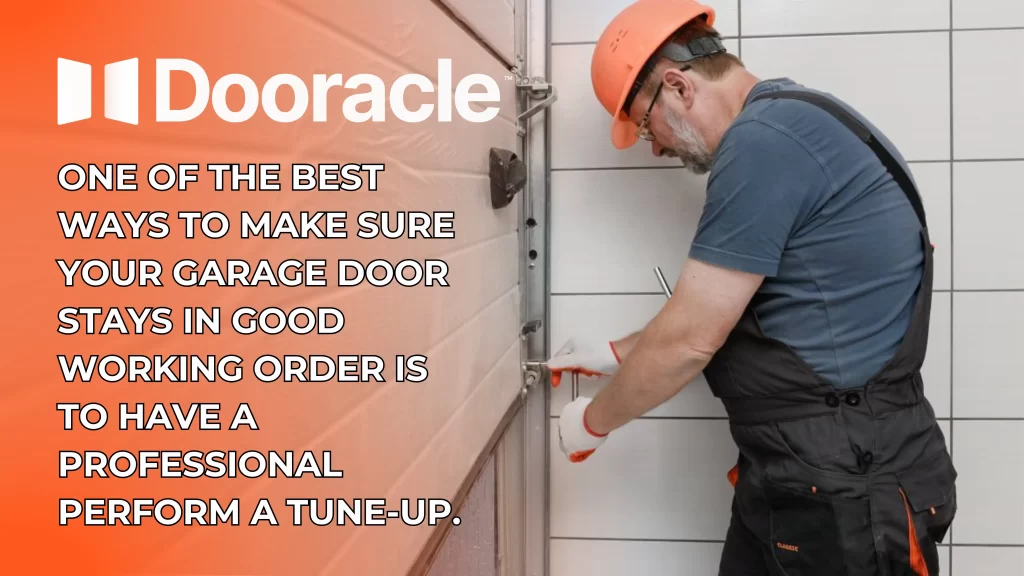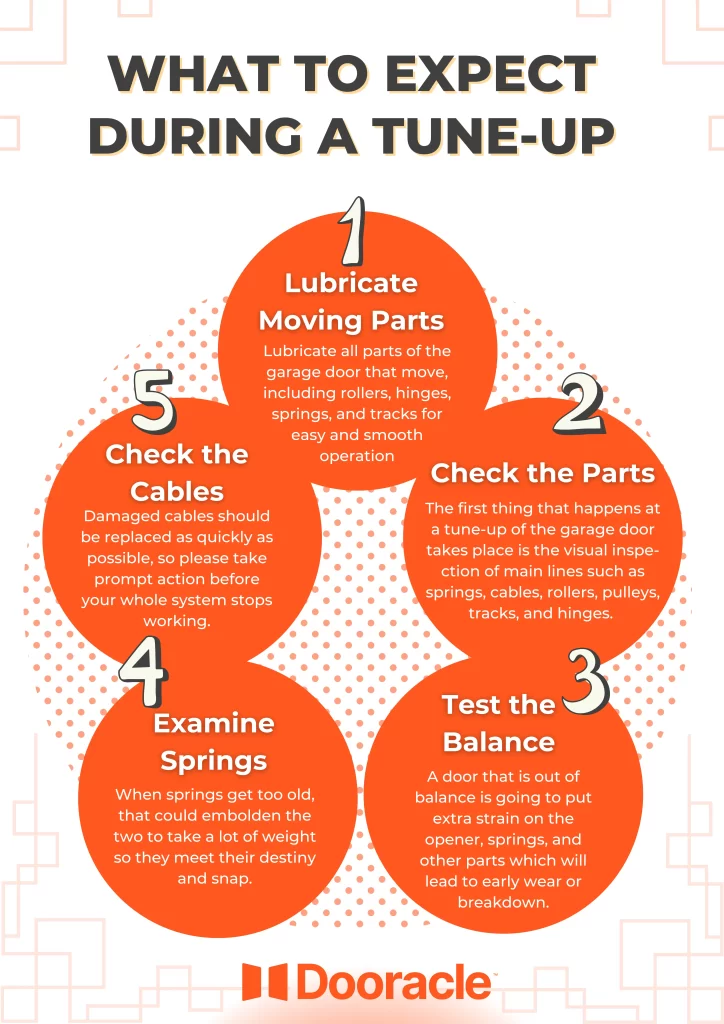What to Expect During a Garage Door Tune-Up: A Homeowner’s Guide
Your garage door is an important part of your home, offering safety, ease, and improving curb appeal. But it, like any other piece of your home, needs regular maintenance to work optimally. It is a simple way to ensure your door operates smoothly and effectively, avoiding potential complete failures or expensive repair needs. Affordable Garage Door Repair specializes in providing garage door tune- ups so your garage door continues to function smoothly. With this guide, we will provide some guidance on what to prepare during a garage door tune-up and why it is a viable option for homeowners.
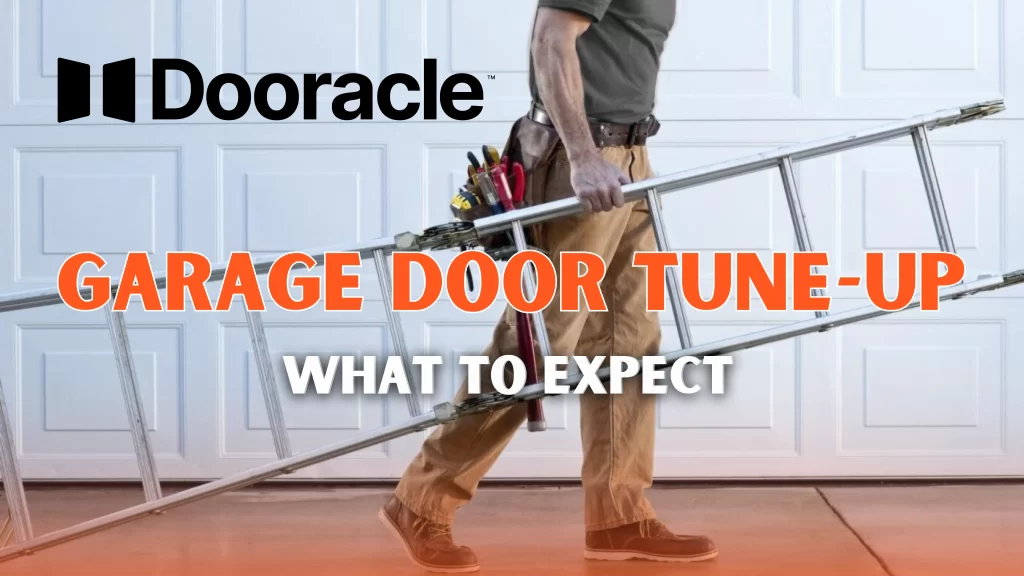
The Development Of Garage Doors And Why They Must Be Maintained Regularly.
Think of a garage door tune as a yearly physical for your garage door system. As these parts degrade over time, worn down or damaged components can cause window motors and other applications to run more slowly than usual, or can fail. Having regular tune-ups can help to identify and remedy any smaller issues before they develop into larger concerns.
- The life of your garage door system is further prolonged by repairing the wear and tear.
- Avoid those awkward situations where your garage door gets stuck pretty much the way you see in movies.
- Check Critical Safety Features For Safe Operation
If you want to conserve energy, be sure your door is airtight and insulated.
How Does An Opener Chain Repair
A garage door tune-up includes a full inspection, adjustment, and lubrication of all the components of your garage door system by a professional technician. This way, each and every part is operating accordingly and safely.
Here is what you can generally expect with a garage door tuneup:
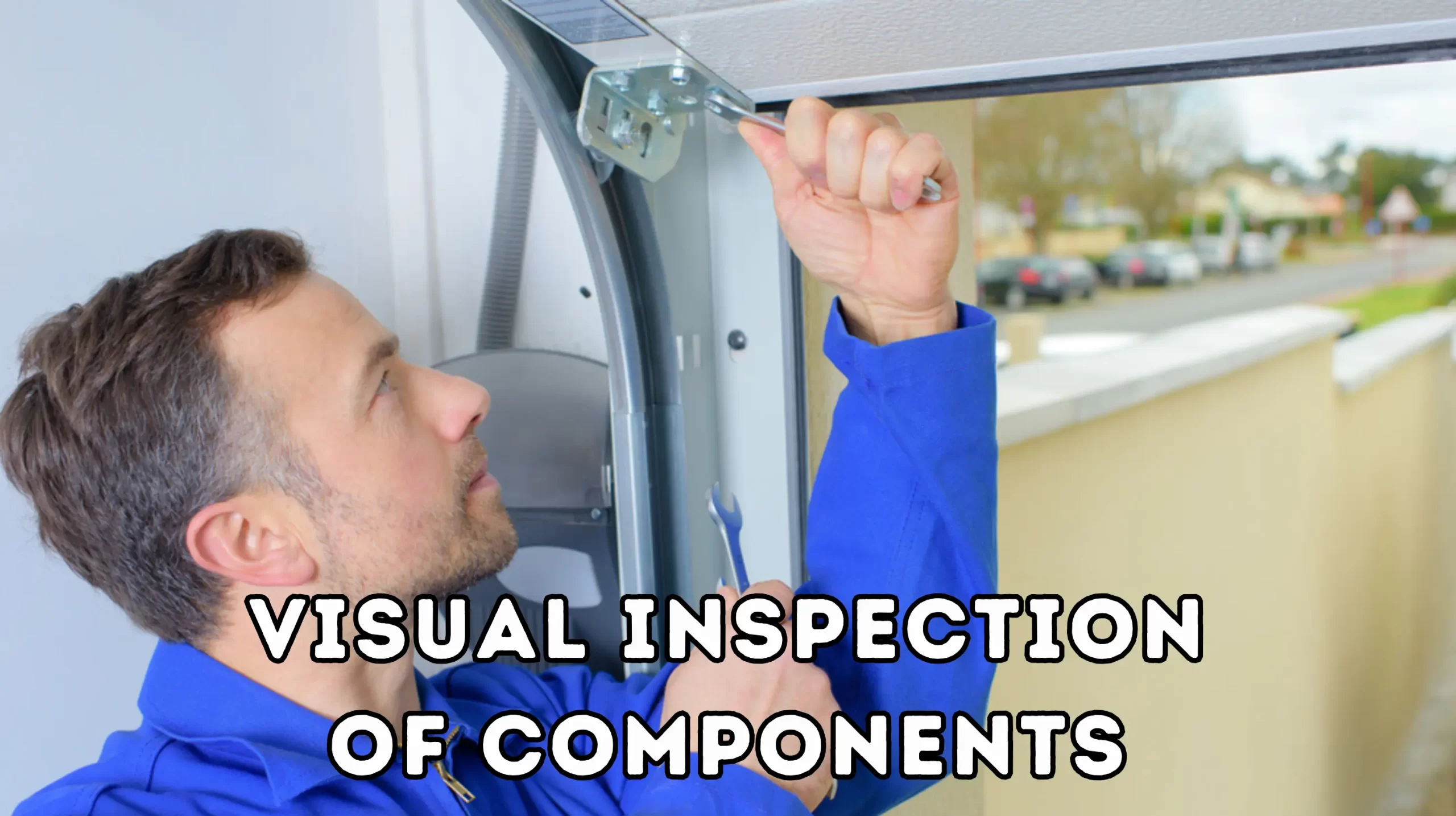
Look at the Parts
The first thing that happens at a tune-up of the garage door takes place is the visual inspection of main lines such as springs, cables, rollers, pulleys, tracks, and hinges. A technician will then inspect for indicators of deterioration, rust, or harm to the door that could affect its function.
- Cables with obvious frays or wear that may be near breaking.
- Springs (or other metal components) are rusty or have corroded.
- Bolts, screws, or brackets that are loose enough for a part to move and maybe snap.
- A pretty good indication that this is so can be the cracks in door panels or if they are warped which could jeopardize the balance of the door.
Lubrication of Moving Parts
During a garage door maintenance service, the technician will also lubricate all parts of the garage door that move, including rollers, hinges, springs, and tracks for easy and smooth operation. A well- lubricated track means the door travels smoothly up and down, reducing friction which can cause parts to wear out sooner.
- A closer Torsion springs can see a lot of action, so they must be well- lubricated to maintain operation and reduce noise.
- Rollers/Hinges: If the door is properly lubricated, that means its rollers and hinges can slide along the track without grinding or squeaking.
- Door tracks: The rollers should glide smoothly and without noise along the lubricated tracks in order to reduce wear.
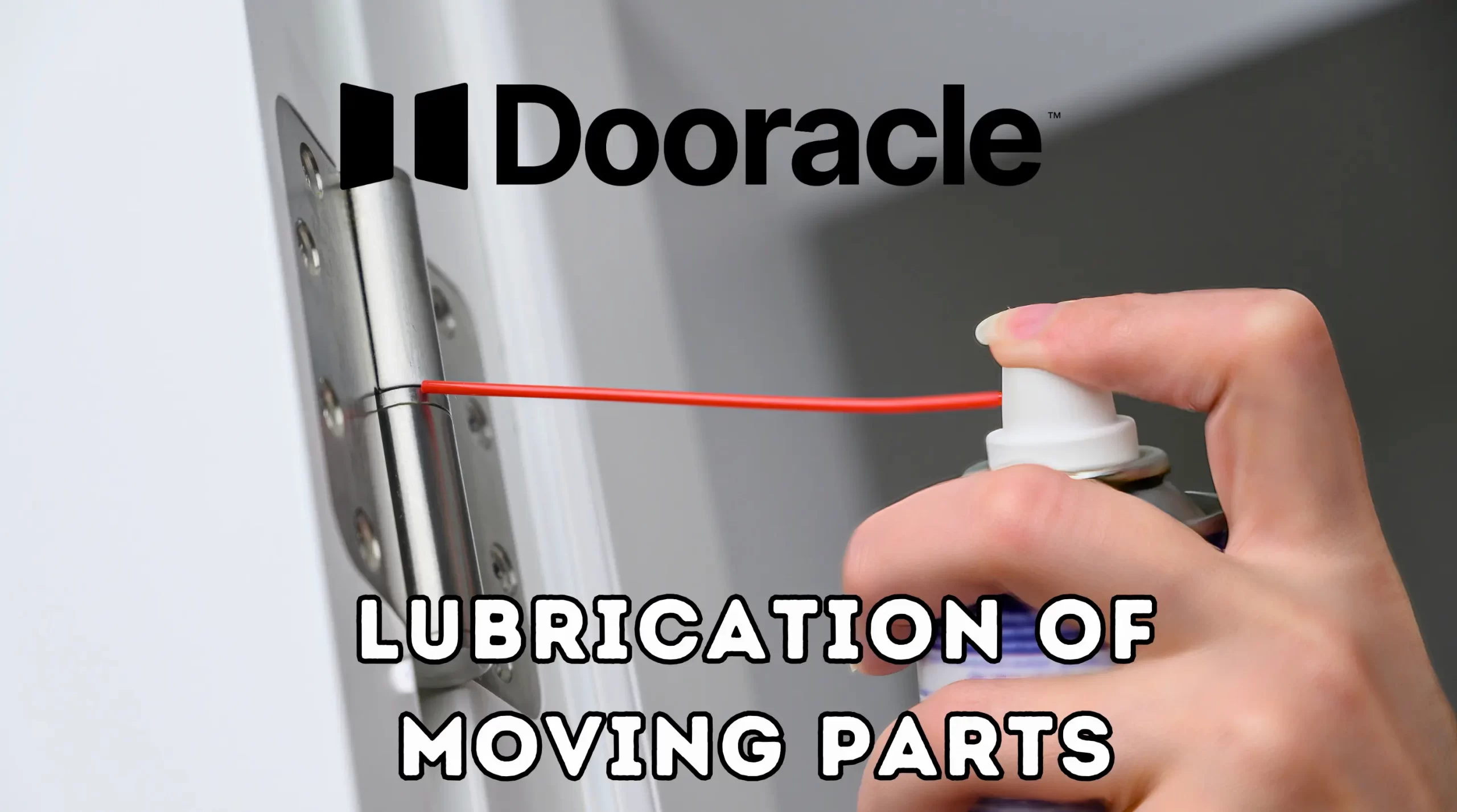
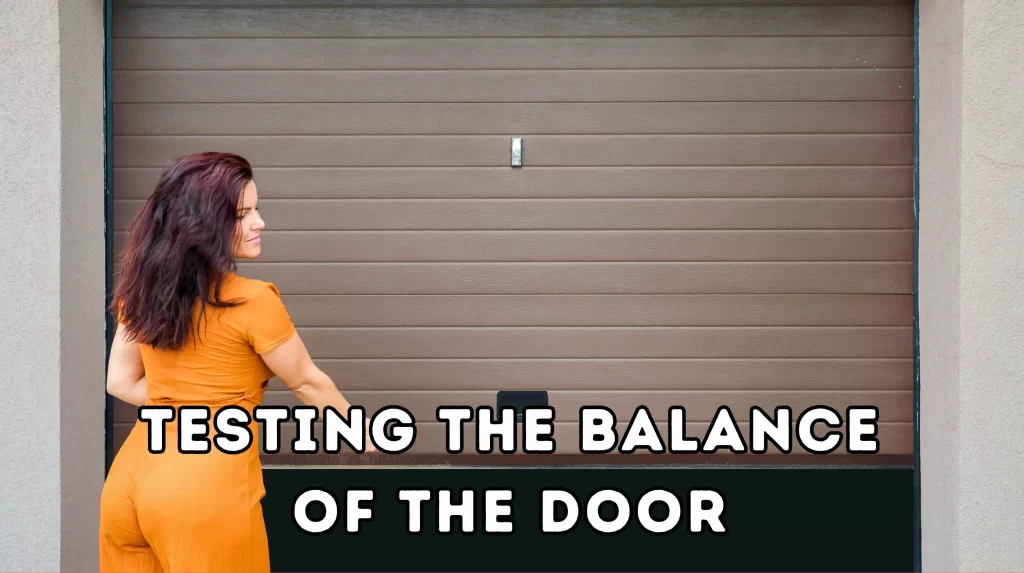
- Balancing is important for any garage door to work properly and open the garage well. A door that is out of balance is going to put extra strain on the opener, springs, and other parts which will lead to early wear or breakdown.
- Ask the technician to check the balance.
- He will pull the emergency release cord to disengage the garage door opener.
- The halfway mark, in turn, is also manually raised and released. The door must remain in place, which means it is correctly balanced. Should it lower or rise, this indicates a harbor needs to correct an imbalance.
Inspecting the Springs and Cables
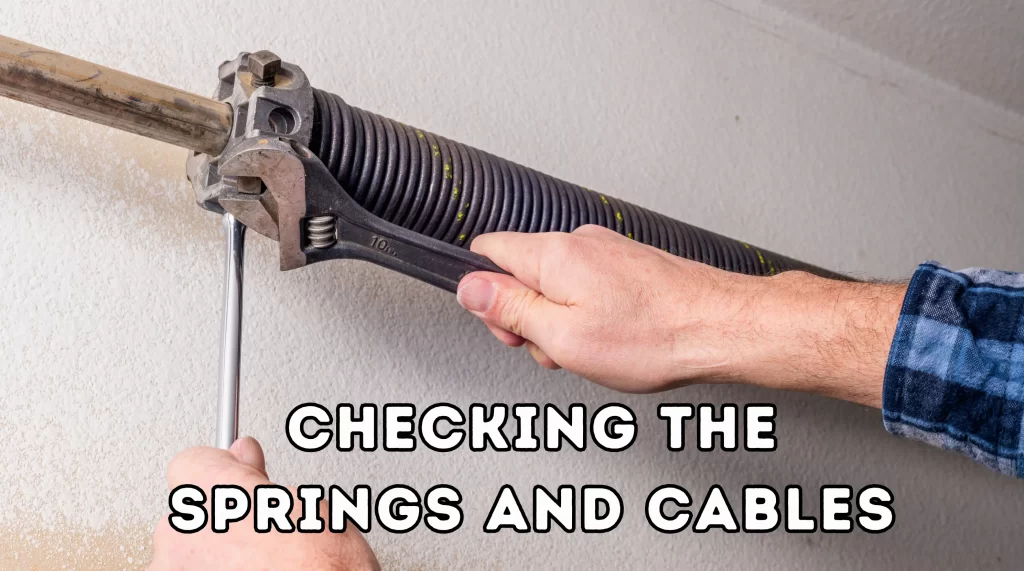
Since garage door springs and cables are under a lot of tension – any sign of wear or damage is a huge safety hazard. The tune-up includes checking these parts and making sure they’re in proper working condition.
- Springs: The technicians will examine the springs to look for any wear, rust, or damage. When springs get too old, that could embolden the two to take a lot of weight so they meet their destiny and snap.
- Cables: The cables that open and close the door are inspected for wear or fraying. Damaged cables should be replaced as quickly as possible, so please take prompt action before your whole system stops working.
- The motorized part responsible for opening and closing the door is known as the garage door opener. The tech will check the performance of your opener and make any tuning that is needed to keep it running smoothly.
- Essential things during Opener Inspection
- Listening out for strange noises coming from the motor or if it is choking up in operation.
- Checking how fast the opener responds to have door opening and closing act instantly
- Aligning force and limit settings to allow the door to properly open and close without overworking the system.
- With each visit, the nuts and the bolts that hold it may loosen due to wear and tear. In a door tune-up, the tech will tighten and adjust all hardware to make sure the door operates safely and effortlessly.
- Newer garage doors have safety mechanisms to protect them from lowering on top of something like the auto-reverse feature and photo-eye sensors that will stop a door from closing if there is an object blocking its path. Related: The 4 Best Dog Bath Tubs for Big to Small Breeds This protective guard keeps your family and pets safe.
- Abilities the technician will Evaluate (safety features):
- The technician will perform an auto-reverse by putting an item such as a 2 x 4 block of wood, under the garage door and closing it. When it touches the object, the door will auto-reverse.
- Photo-Eye Sensors: The alignment of the sensors is examined by a technician, who waves an object in front of the beam while the door is closing. When operating correctly, the door should reverse as soon as there is an obstruction that blocks the beam.
5 Signs Your Garage Door Needs Servicing
Annual maintenance is typically done to ensure that your garage door continues to function, but there are signs that you may need a tune-up before your yearly visit. These are indicators to be weary of :
It makes noise
Grinding, squeaking, or rattling noises during operation can signal a need for lubrication of the door or that parts are worn out.
After that, you can add tools to figure out slow or uneven movement — this response may indicate worn components or it could just be off-balance.
Door opening and closing
A garage door may need opener adjustments or track maintenance when it gets stuck halfway, or if the door is having trouble opening and closing.
Vibrations
If your garage door is vibrating during operation, there may be some parts that are loose or are not properly aligned.
How Regularly Do You Have to Get a Garage Door Tune-Up?
All things considered, most homeowners can benefit from a yearly garage door check-up. If you use your garage door often or live in an area known for extremely high or low temperatures and frequent storms, you might consider getting tune-ups more frequently.
Routine maintenance not only ensures your garage door remains in working order but also can ward off surprise mechanical failures or safety issues. Trivial maintenance now could save you thousands of dollars in expensive repairs or subsequent replacements down the line.
Conclusion
Keeping Up with Your Home A garage door tune-up is one of the components that will help you maintain your home and keep it going strong. When you have a tune-up, an expert will inspect and adjust all parts of the system from springs to cables and opener as well as lubricate the moving areas on your safety sensors.
One of the best ways to make sure your garage door stays in good working order is to have a professional perform a tune-up. Schedule your garage door tune-up today if you are looking to provide some much-needed attention to your garage door, don’t wait.
